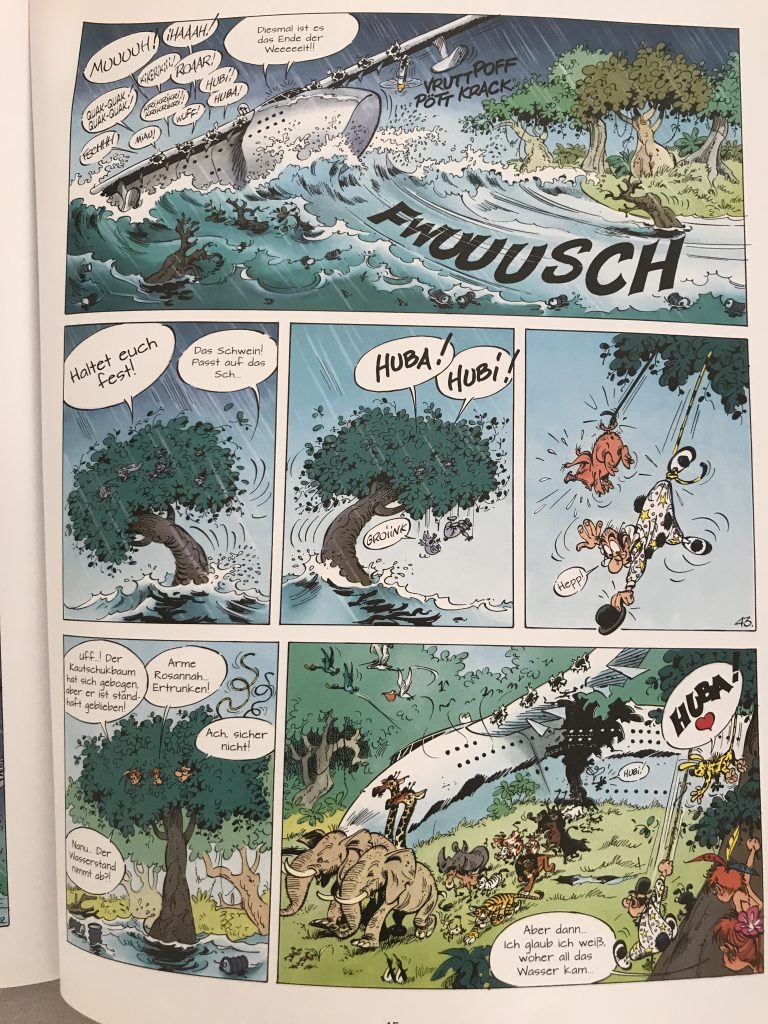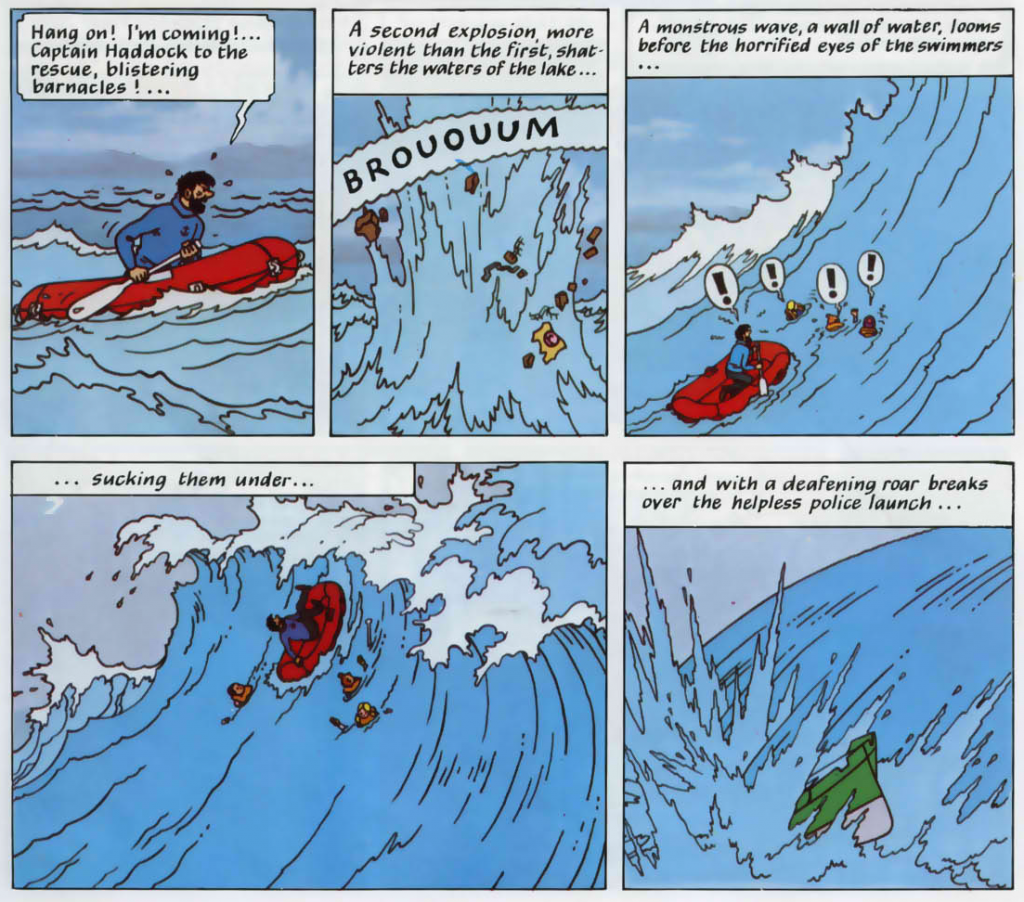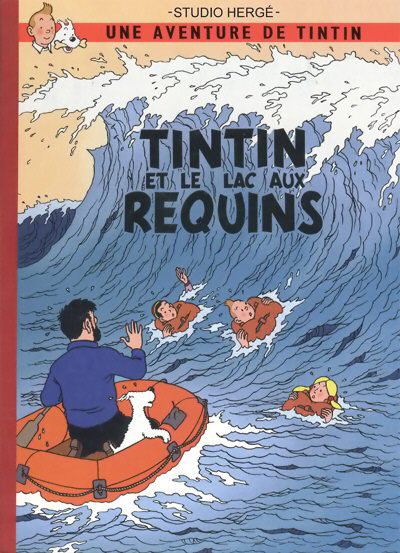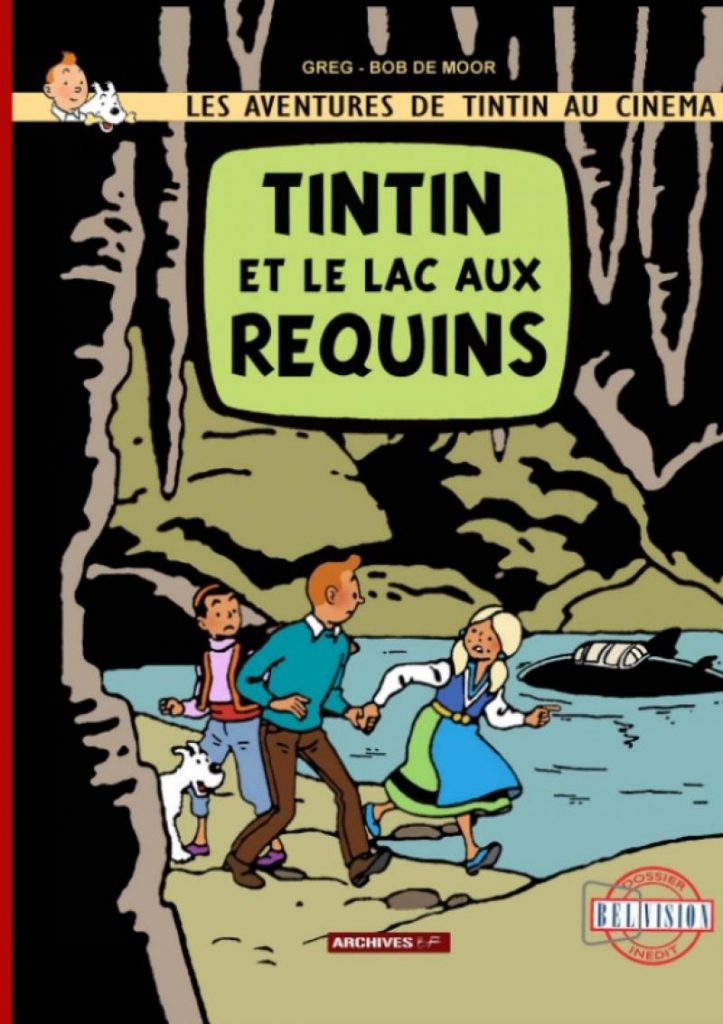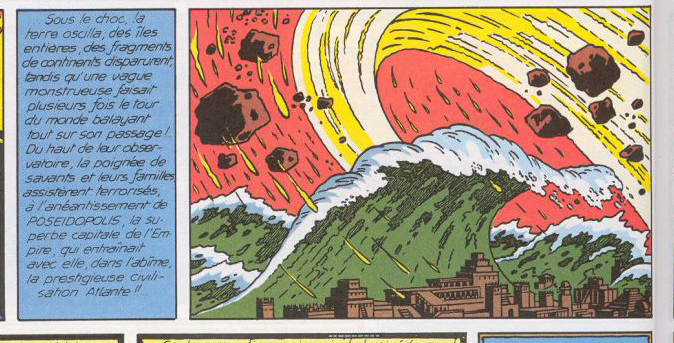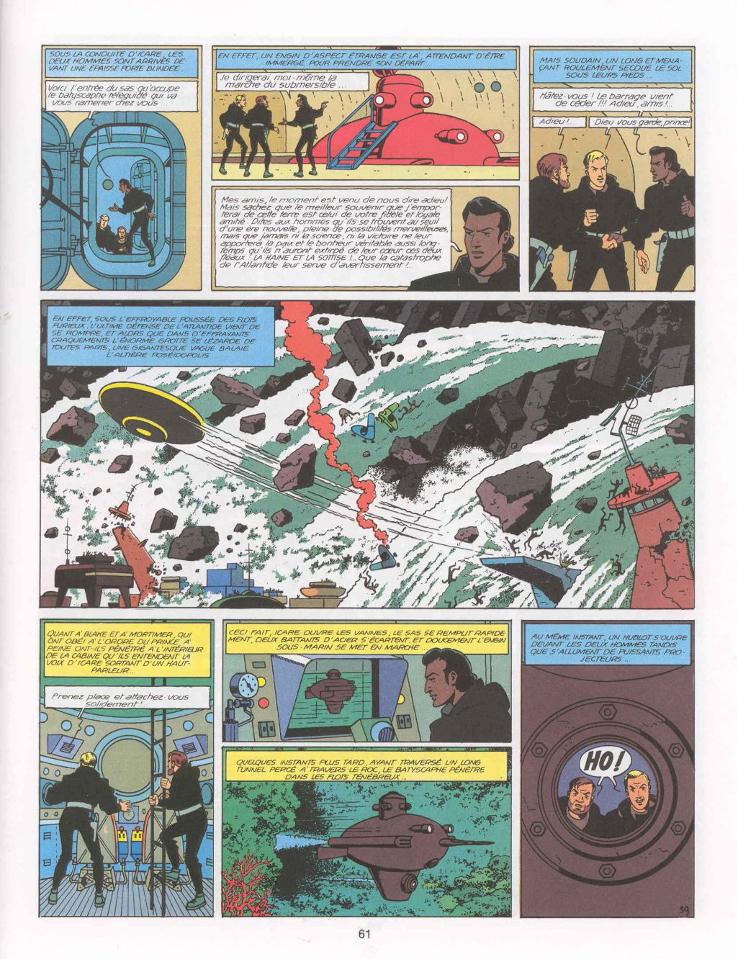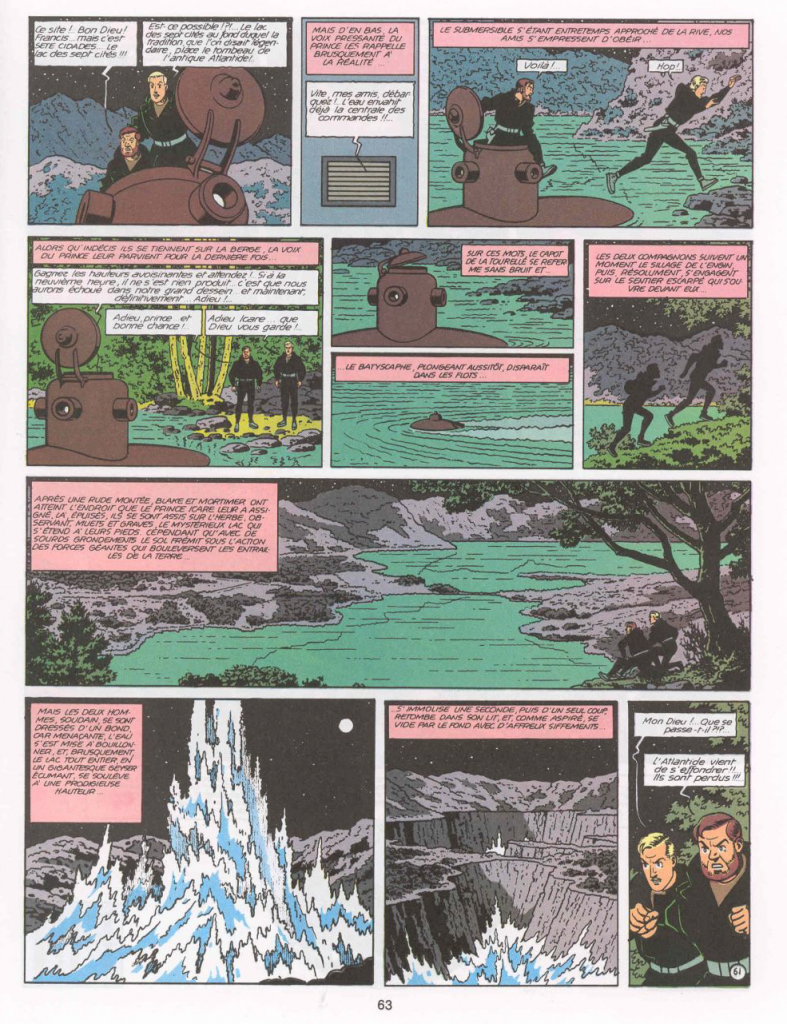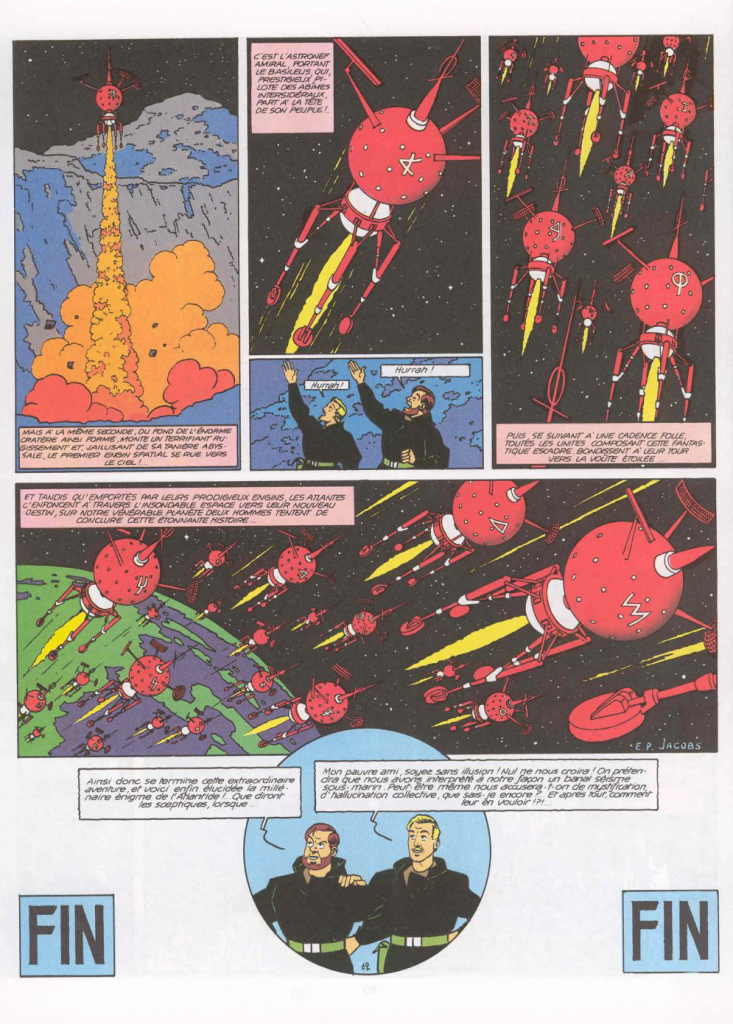In a comic book from the Belgian comic series Marsupilami the artists Batem and Yann create a satire on megalomania pipe dreams of the super rich and the fascination of the flood myth.
Set in the South-American Amazon basin, the plot is based on the true stoy of Henry Ford’s „Fordlandia“ project, a business venture the us-American automobile entrepreneur conducted in the 1920‘s in the region to secure rubber supply for the booming car industry. In the comic book a fictitious billionaire follows Ford’s footsteps into the jungle to pick up the ruinous business. But he is obsessed with the idea of a second deluge and devotes all his time – and money – into catching animals to cage on his arch. Like a true business man he does not build the arch himself but buys a mega-flying boat off another billionaire, Howard Hughes. Like Fordlandia, the legendary „H-4 Hercules“ was a massive fail too; the only one of these planes ever produced had one flight only in 1947.
The images are from my german edition of the book:

The story was published in 1991 but one can’t help think of today’s grant rescue schemes of the likes of Elon Musk and Jeff Bezos. It’s a common feature of today’s climate debate, that billionaires seek and successfully generate public attention to techno-utopian elitist projects. (See this article by Douglas Ruschkoff on his encounter with prepper billionaires which caused quite a buzz upon it’s publication last year) The nice twist in Batem and Yann’s story is that this rescue project is completely built on the past failures of similar minded men.
In addition to these megalomania schemes and failures, the story also references environmental destruction and authoritarian development projects in developing countries: When the deluge does eventually come, it is not a universal one but just the massive tidal wave from a bust reservoir dam, that was finished just before by the authoritarian regime of Palumbia, the fictitious state the adventures of the Marsupilami are set in.
